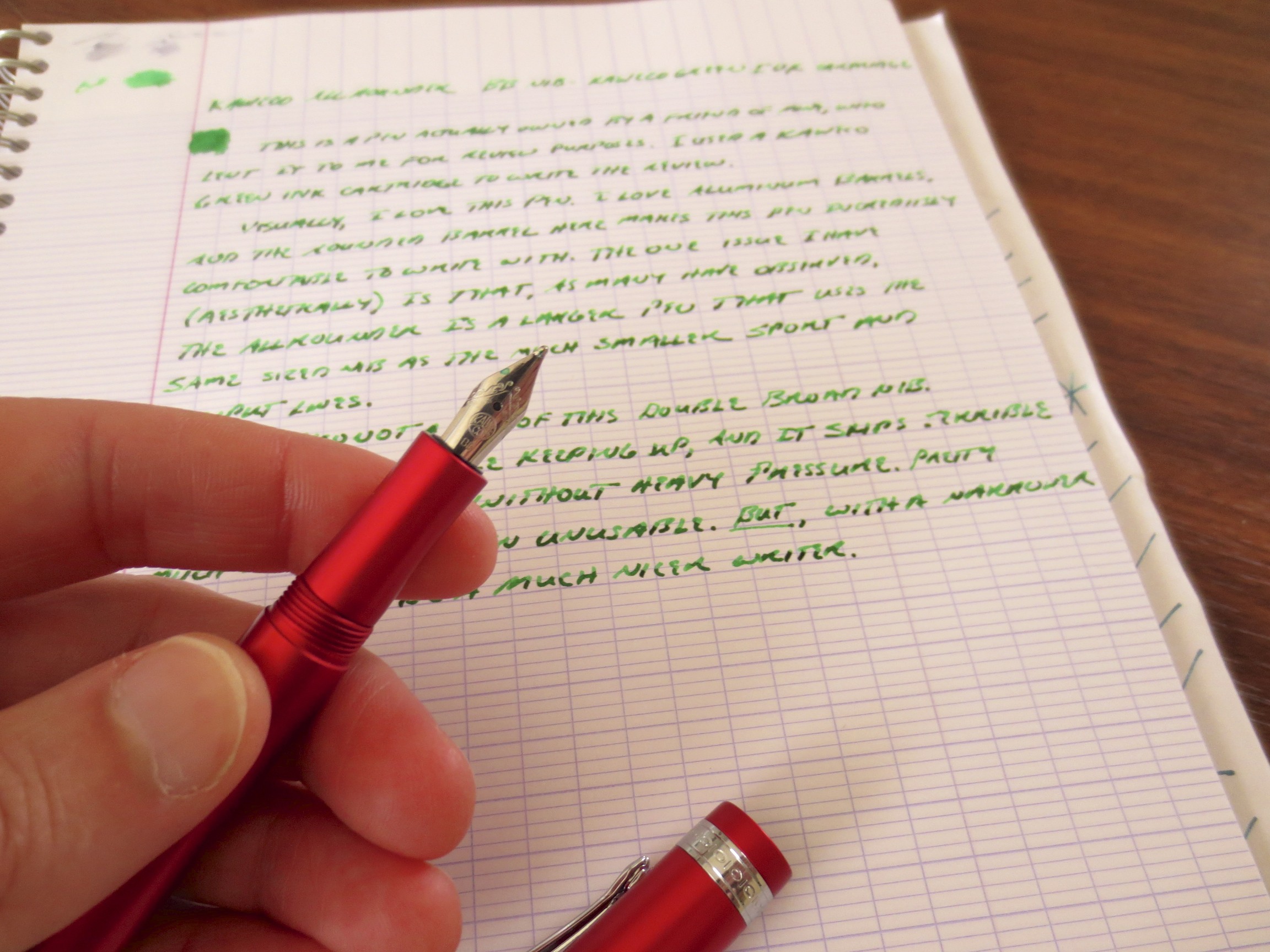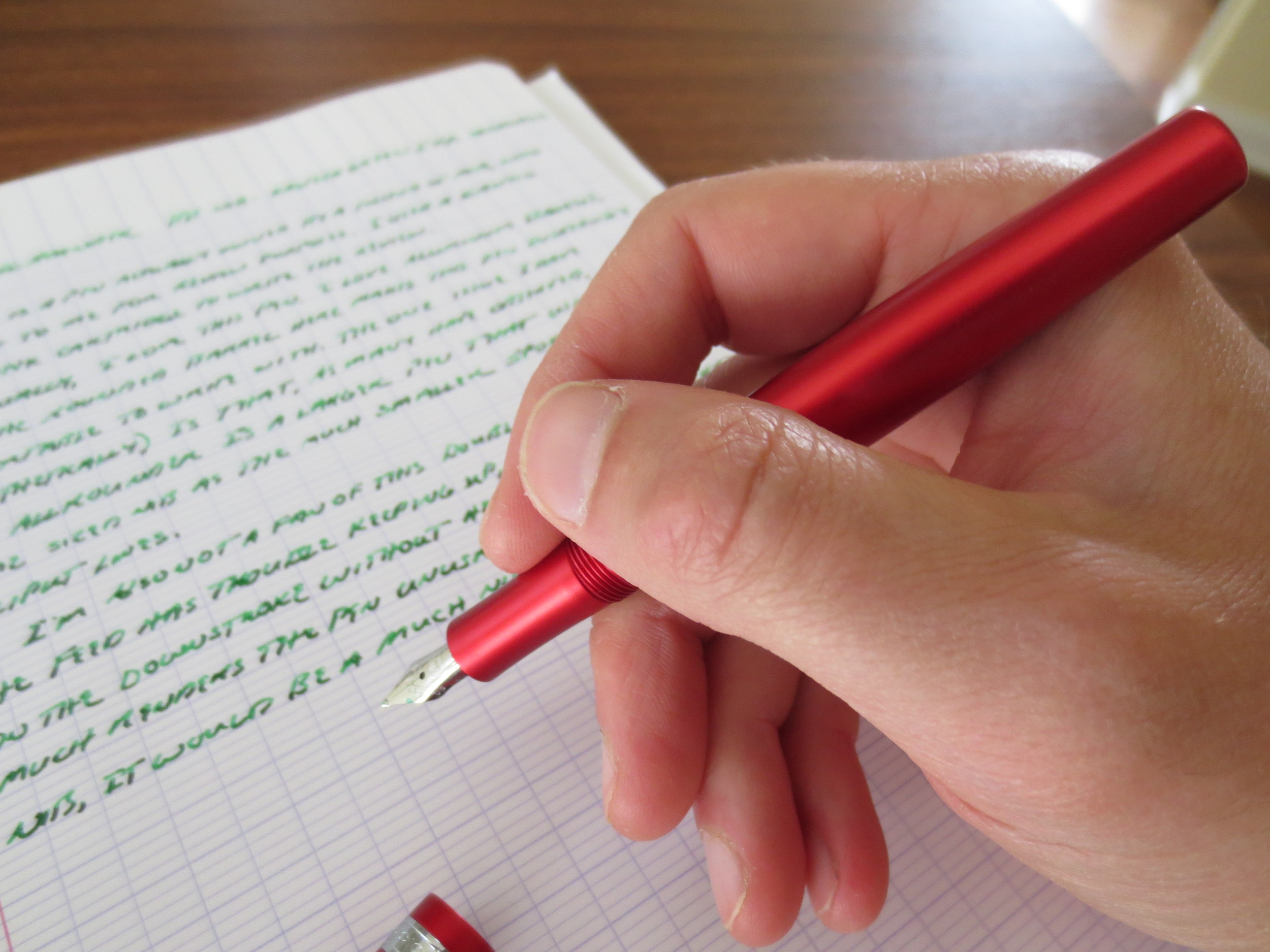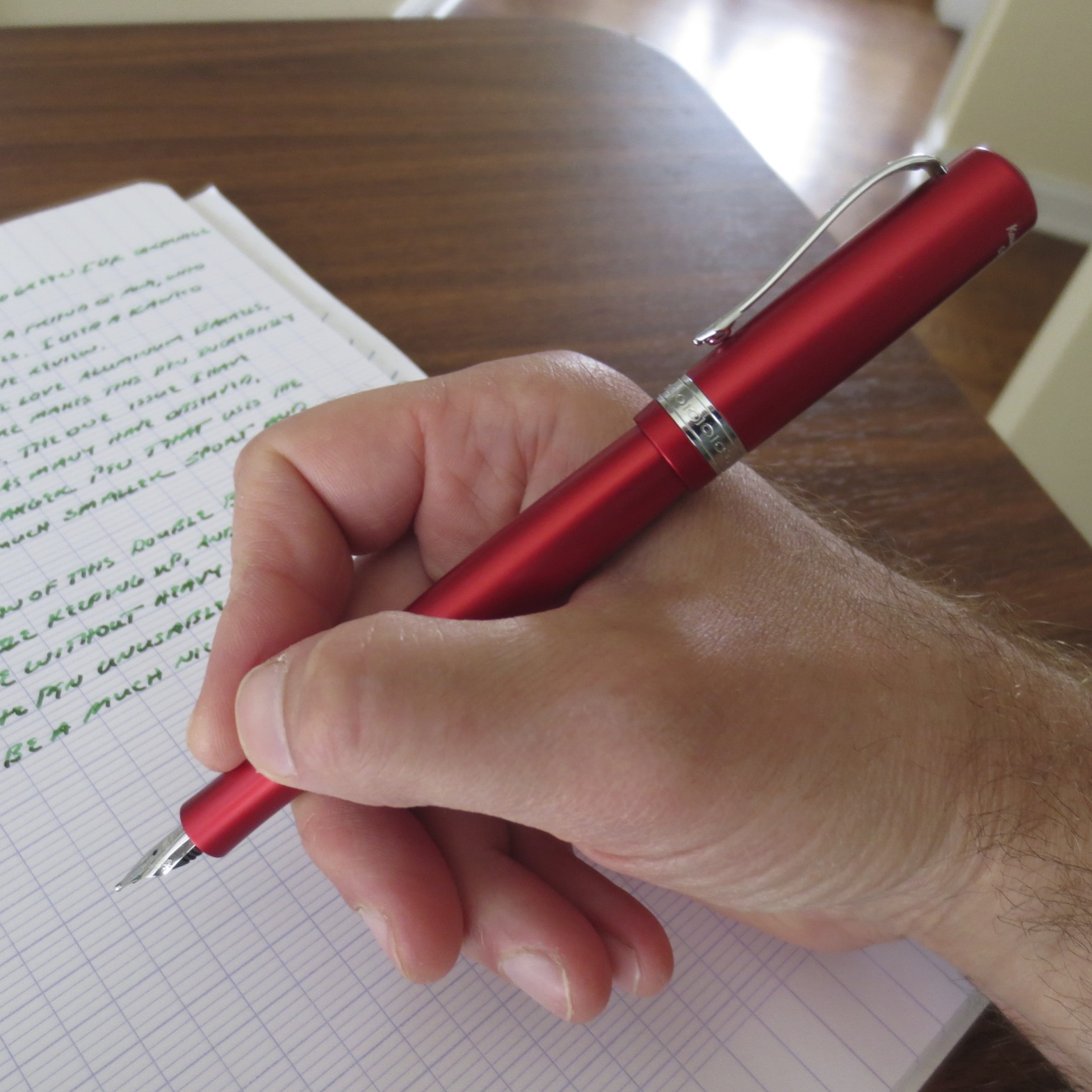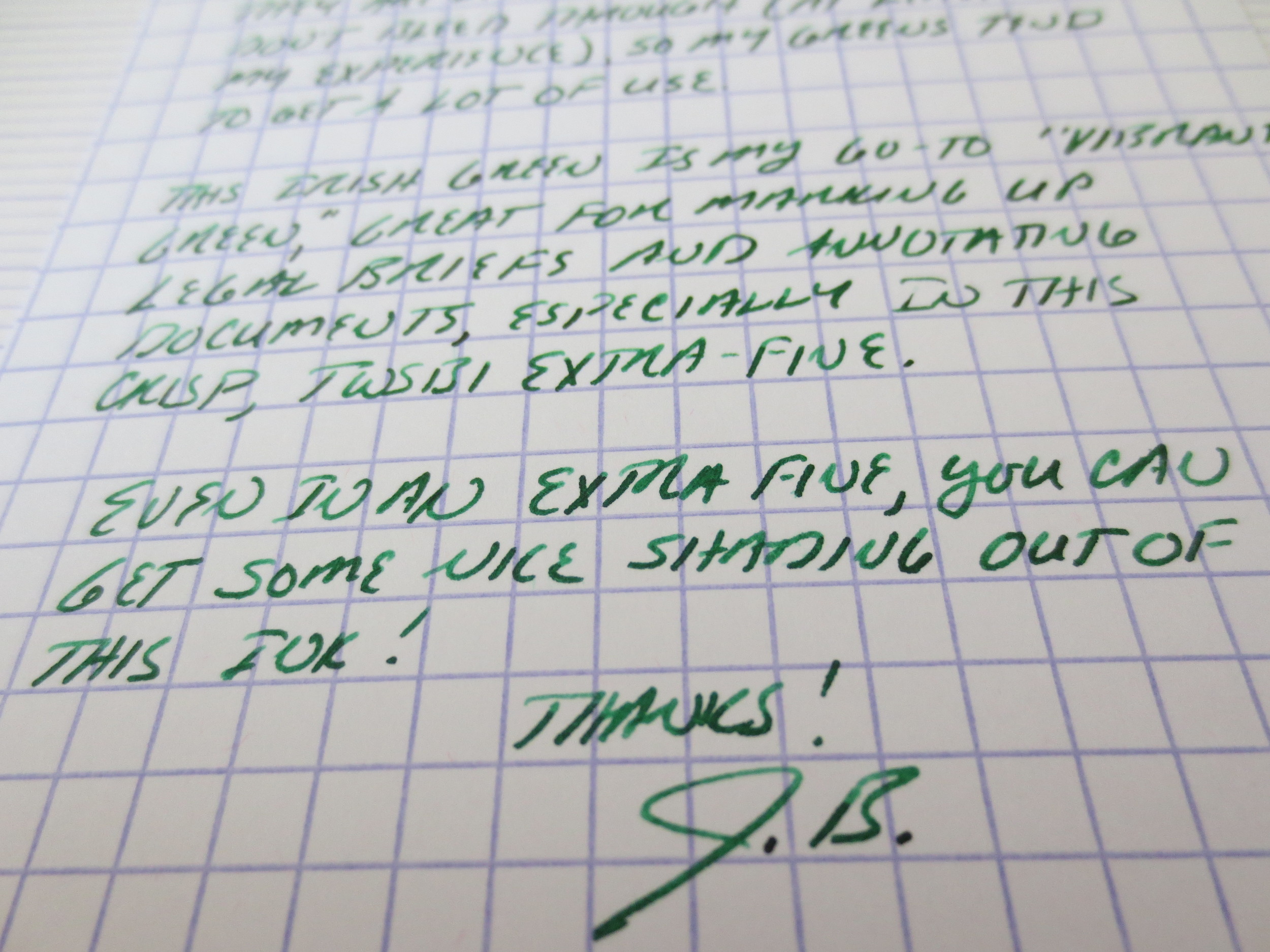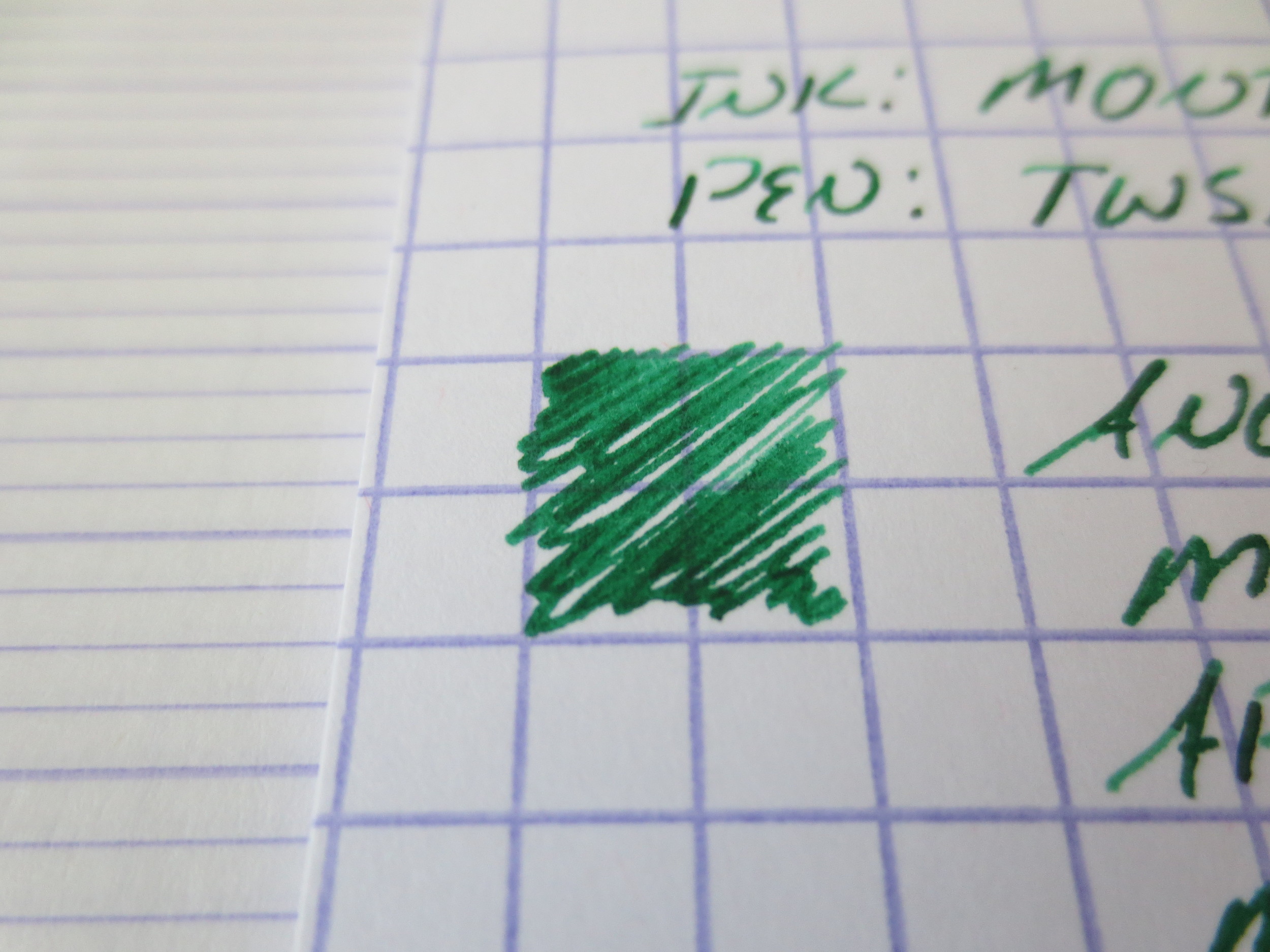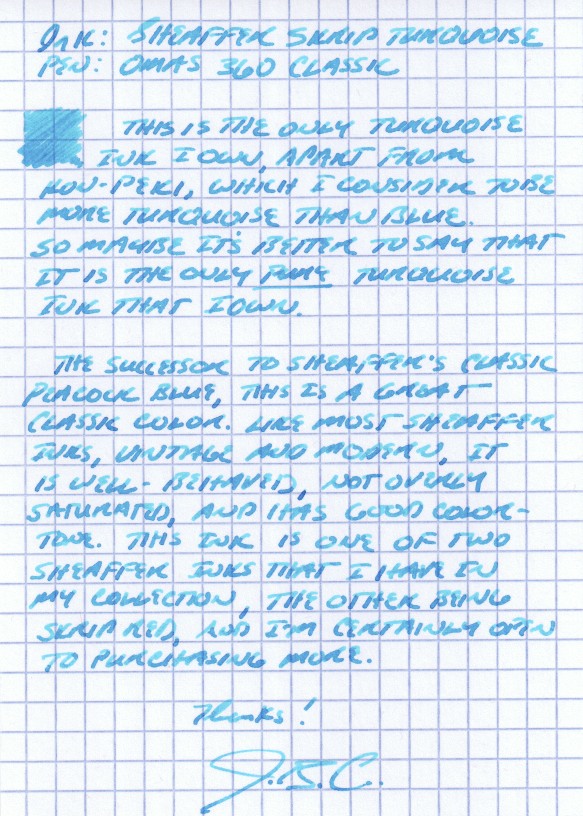Pilot-Namiki Blue-Black is a good workhorse ink: it's not flashy, but it's reliable in the sense that it works on most types of paper and has a nice, classic blue-black tone that's appropriate for school, business and most other daily uses. I have this ink in cartridge form (I picked up a package of 10 carts at Kinokuniya during my last visit to New York City), and it finds itself in regular rotation through my Vanishing Point and my Custom 74. For a blue-black ink, the Pilot ink leans more to the "blue" end of the spectrum, especially when wet, although I would still consider this a "classic" blue-black. Highly recommended.
As you might notice, the cartridges are proprietary, so you will only be able to use them in Pilot Pens.
Sample Paper is Exacompta Index Card.
